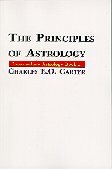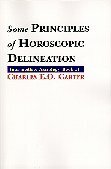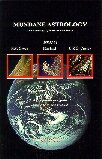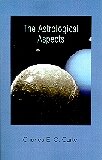
|
The Astrology Center of America, 207 Victory Lane, Bel Air, MD 21014 Tel: 410-638-7761; Toll-free (orders only): 800-475-2272 |
|||||||
|---|---|---|---|---|---|---|---|
| Home | Author Index | Title Index | Subject Index | Vedic Books | Tarot | E-Mail: | |
 |
Intermediate & Advanced Astrology:
|
 C.E.O. Carter (1887 - 1968) was the most outstanding British astrologer of the 20th century. After the death of Alan Leo, Carter ran Leo's Astrological Lodge at the Theosophical Society, from 1920 to the 1952. He was first Principal of the Faculty of Astrological Studies, which he helped found in 1948. He edited The Astrologer's Quarterly from 1926 until 1959.
C.E.O. Carter (1887 - 1968) was the most outstanding British astrologer of the 20th century. After the death of Alan Leo, Carter ran Leo's Astrological Lodge at the Theosophical Society, from 1920 to the 1952. He was first Principal of the Faculty of Astrological Studies, which he helped found in 1948. He edited The Astrologer's Quarterly from 1926 until 1959.
During his lifetime, most of his books were published by the Theosphical Society, which, in the decades following his death, steadily faded. There was a time, not too many years ago, when Carter's books, excellent though they are, were hard to get. Some were out of print. They are all now back in print.
Carter's books, penetrating & full of unique insights, are ideal for intermediate & advanced astrologers. They are, in fact, virtually in a class by themselves. Instead of a book on synastry, or forecasting, or horary or elections, Carter's books are organic wholes. Instead of treating aspects in one chapter, signs in another, and planets in a third, Carter shows how individual astrological factors combine to create living, breathing people. For example, Carter tells us that a cardinal grand cross has one sort of effect if it falls in succedent houses, quite another if it falls angular. It is this constant interplay of factors, and Carter's brilliant, lucid exposition, that makes his books so precious.
September, 2012: Here is a pdf of Carter's rarest book, The Seven Great Problems of Astrology. It was first published in 1927. You read it on-line, you may download and print it.
 Indicates a book on our Top Ten list. If you would like to find more books like it, click on the star.
Indicates a book on our Top Ten list. If you would like to find more books like it, click on the star.
Have you read any of these books? Are you a fan of Charles Carter? Want to tell the world about them?

|
||

|
||
 |
||
 |
||
 |
||
 |
||

|
||
essays
ESSAYS ON THE FOUNDATIONS OF ASTROLOGY- C.E.O. Carter, $19.95
Contents:
1. The sun, moon & minor planets
2. The major planets
3. Aspects & exaltation
4. The positive-negative polarity
5. Aspects in terms of the signs
6. The first six or northern signs
7. The last six or southern signs
8. Problems of the houses.
Comment:
Carter wrote this book in London during World War II. It was his first book in more than a dozen years.
In this book, Carter turns his attention to fundamentals. Why the planets are what they are. How the Sun differs from the Moon. How Jupiter and Mercury are interrelated. Having had his fill of aspects in terms of the planets, in this book Carter tells us of aspects in terms of signs and the elements they represent. A planet in a fire sign, in square to a planet in an earth sign, Carter says, is an obviously difficult combination: Fire consumes earth, or, earth smothers fire. On the other hand, air/water squares are much less stressful.
Carter was particularly fascinated by the nativities of Benito Mussolini and Adolf Hitler, his contemporaries. Charts for both men are given. Mussolini he declares to be a “bombastic Italian dictator”, but Hitler remained a puzzle. The last essay in the book is an interesting discussion of the Ptolemaic, Porphry, Campanus, Regiomontanus, Placidian & Carter's own system, which he calls Poli-Equatorial. He gives examples.
Charles E.O. Carter, one of the leading astrologers of the 20th century, was President of the Astrological Lodge at the Theosophical Society from 1920 to 1952. He was first Principal of the Faculty of Astrological Studies, which he helped found in 1948. He edited The Astrologer's Quarterly from 1926 until 1959. Essays on the Foundations of Astrology was first published in 1947.
Click
herefor a PDF extract, on Aspects in Terms of the Signs.Astrology Classics, 186 pages.
 |

|
|
Contents:
Foreword1. The derivation of the twelve
2. The Zodiac & the unfoldment of the soul.
3. The signs & the planets as cosmic ideals
4. The Zodiac as a path to the good
5. A final inquiry
6. The Zodiac & the art of directing
7. On transits
8. Pastures new
9. Some brief studies:i. Short-lived genius: Rupert BrookeIndex
ii. Genius & eccentricity: Percy Bysshe Shelley
iii. Genius allied to madness: William Blake
iv. Death from hardship & ill-treatment
v. Psychological defeat
vi. The nativity of a heroine: Edith Cavell
vii. Suicidal tendencies
viii. A man of courage: William T. Stead
ix. A great philosopher: Ralph Waldo Emerson
x. A maniac genius: Adolf Hitler
Comment:
In this book, Carter shows how the Zodiac of twelve constellations describes an ideal world. In other words, how the soul – the ideal – reveals itself in astrological terms. In the process, Carter invents a new form of rulerships, based on the traditional exaltations, which includes the outer planets.herefor a PDF extract, On Transits.Carter also teases us with his unpublished system of numerology, which was based on 12, rather than the usual 10. As astrology is based around the numbers 2, 3, 4 and 12 (not 5 or 10), a base-12 number system is of immediate interest, but, realizing his subject was abstract and unlikely to appeal to all, Carter also includes innovative ideas on directing, and on transits. The result is a book that fascinates on many levels.
The Zodiac and the Soul was first published in 1928, with revisions in 1947, 1960, and 1968 (look for the footnote), the year of his death. Revisions are how Hitler came to be in a book originally written & published well before anyone in London knew of him.
Click
Astrology Classics, 128 pages.

|
THE ZODIAC AND THE SOUL | |

207 Victory Lane, Bel Air, MD 21014
Tel: 410-638-7761; Toll-free (orders only): 800-475-2272
| Home | Author Index | Title Index | Subject Index | Vedic Books | Tarot | E-Mail: |
Established 1993, The Astrology Center of America is owned & operated by David Roell.
This entire site (AstroAmerica.com) is copyright 1996, 1997, 1998, 1999, 2000 by William R. Roell.
All rights reserved.